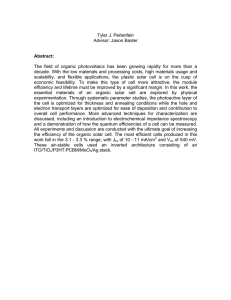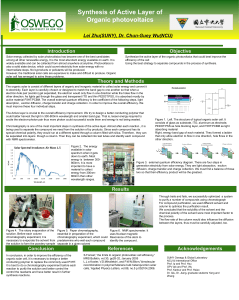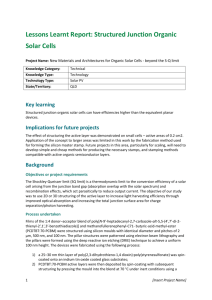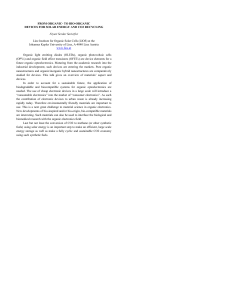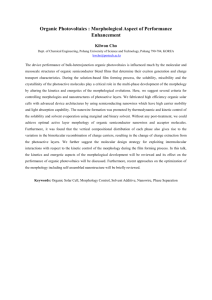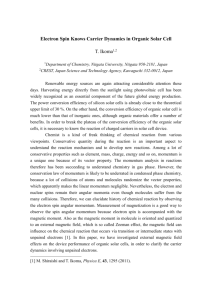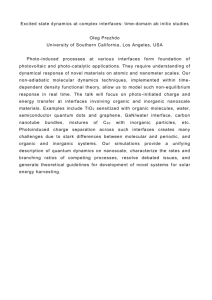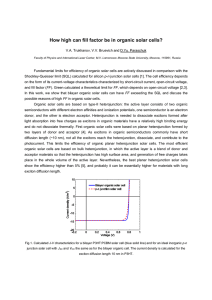Physics Journal Club Meeting Characterization of Bulk
advertisement
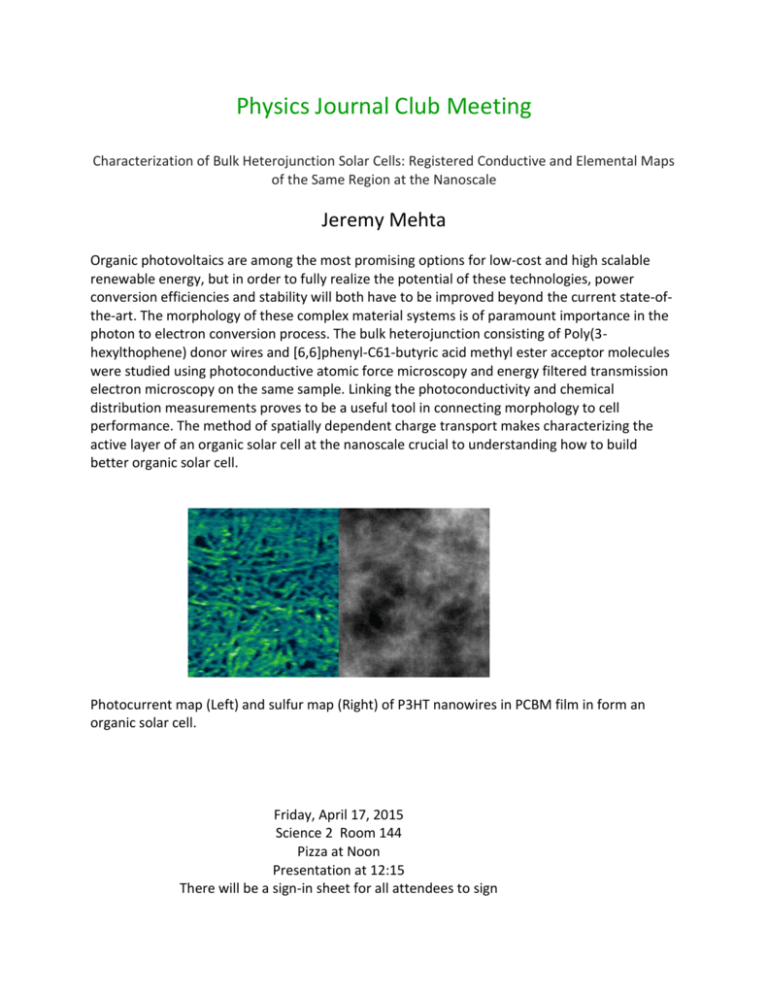
Physics Journal Club Meeting Characterization of Bulk Heterojunction Solar Cells: Registered Conductive and Elemental Maps of the Same Region at the Nanoscale Jeremy Mehta Organic photovoltaics are among the most promising options for low-cost and high scalable renewable energy, but in order to fully realize the potential of these technologies, power conversion efficiencies and stability will both have to be improved beyond the current state-ofthe-art. The morphology of these complex material systems is of paramount importance in the photon to electron conversion process. The bulk heterojunction consisting of Poly(3hexylthophene) donor wires and [6,6]phenyl-C61-butyric acid methyl ester acceptor molecules were studied using photoconductive atomic force microscopy and energy filtered transmission electron microscopy on the same sample. Linking the photoconductivity and chemical distribution measurements proves to be a useful tool in connecting morphology to cell performance. The method of spatially dependent charge transport makes characterizing the active layer of an organic solar cell at the nanoscale crucial to understanding how to build better organic solar cell. Photocurrent map (Left) and sulfur map (Right) of P3HT nanowires in PCBM film in form an organic solar cell. Friday, April 17, 2015 Science 2 Room 144 Pizza at Noon Presentation at 12:15 There will be a sign-in sheet for all attendees to sign
